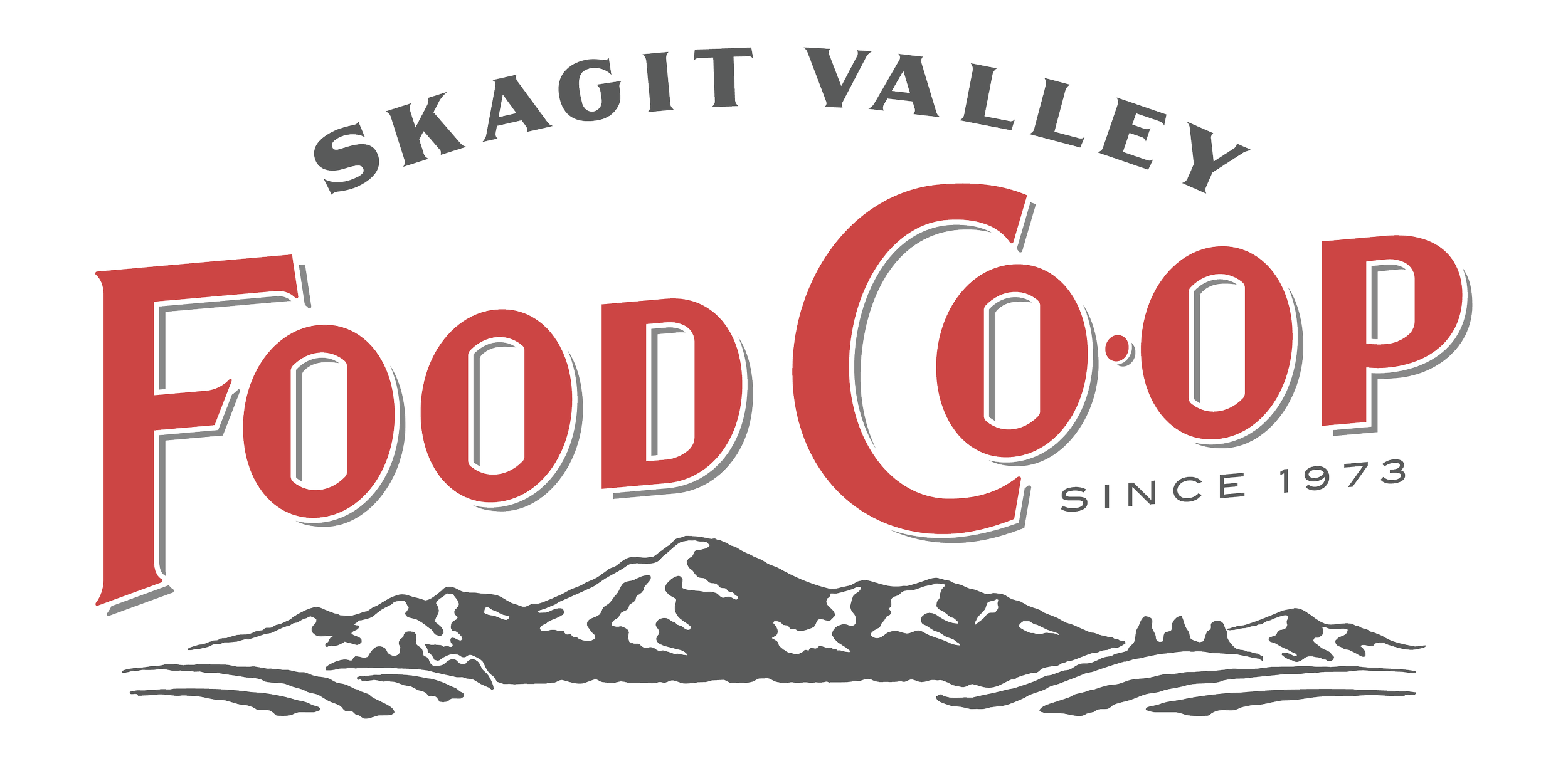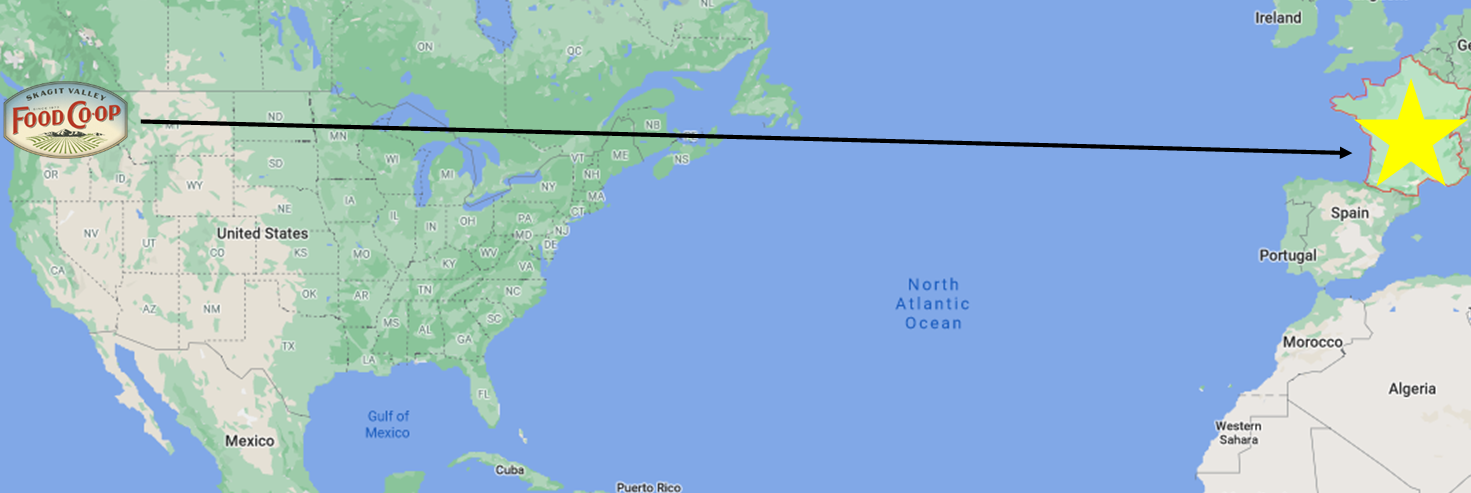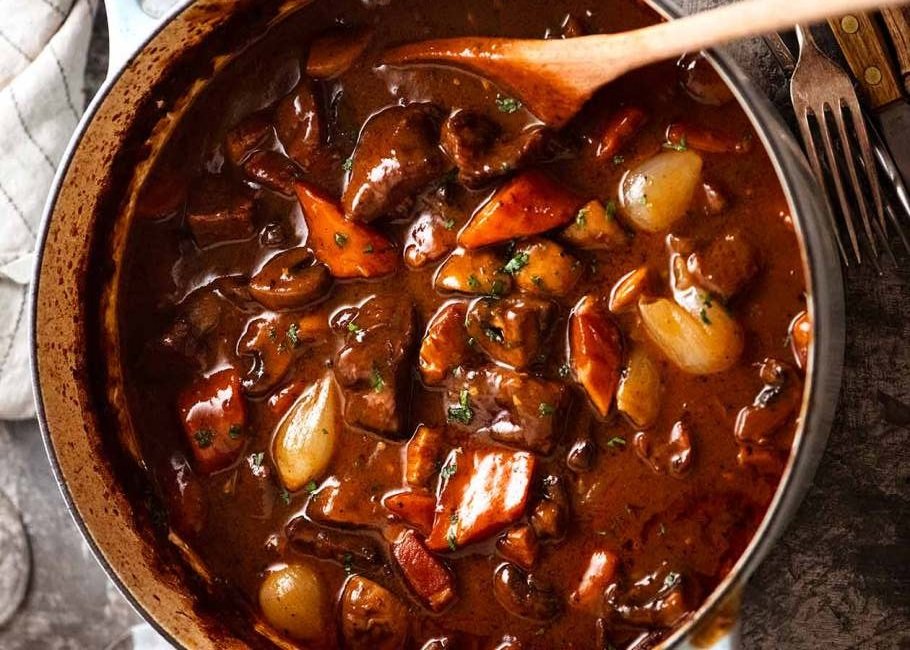The Wandering Kitchen: France
In the Skagit Valley Food Co-op’s Wandering Kitchen Travel Blog Series, we’re taking you on a virtual trip to some of the best places on Earth for world-class cuisine. Whether it comes from your backyard or a different continent, good food has the power to transport you anywhere you want to go. So while you might not travel to the heart of India, the Caribbean, or the boot of Italy by plane, train, or automobile, you can take your taste buds on a trip simply by turning your dining table into a delicious destination for some of the world’s best food.
We’ll be featuring locations near and far known for their food, inspirational recipes to try in your own kitchen, as well as products you can find in the Co-op to give you a taste of the cuisine.
In this edition of The Wandering Kitchen, we're taking a trip to the awe-inspiring, ever romantic, France!
Why France?
Aside from its rich history, beautiful rustic architecture, and eloquent language of love, France has churned out some of the most iconic foods we've come to love today.
Between the pastries and the slow-cooked dinners, the French sure know good food.
French-Inspired Recipes
Skip the 12-hour flight and get a taste of France right at home with these French-inspired recipes! Black beret is not required but certainly makes the cooking more fun.
Photo Courtesy of King Arthur Baking
Baguette
There are few things that compare to the aroma of fresh-baked bread. Everything that is, aside from freshly baked bread on the streets of France.
Crunchy on the outside and perfectly chewy on the inside, a true French baguette can be eaten entirely on its own, though a spread of butter certainly isn't out of the question.
Translating to "wand", "baton" or "stick", baguettes were first recorded as a type of bread in 1920, though their origins date back to the early 19th century.
Like most traditional breads, true baguettes are made up of a simple combination of flour, water, salt, and yeast.
Photo Courtesy of Sally’s Baking Addiction
Crêpes
Just like Starbucks in Seattle, you can find a crêperie on basically every corner in France.
They're so popular in fact, that February 2nd became known as the Day of the Crêpes, referring to the tradition of Crêpes being offered on Candlemas, a traditional Chrisitan holiday celebrated in France.
A thin pancake of sorts, crêpes are often filled with sweet or savory ingredients and either rolled or folded up for easy eating. Making crêpes at home is also super simple, as they only require a couple of ingredients and the batter can be made in a blender.
You'll want to make sure to grab a big skillet, though, or a special crêpe pan if you're really feeling committed.
Photo Courtesy of Gimme Some Oven
French Onion Soup
When it's rainy and cold and all you want is to feel is warm and cozy, French onion soup is the move. It's also one of the easier and cheaper soups to make, calling for just a few simple ingredients and a couple hours of your time.
Historically, French onion soup was thought of as an affordable, accesible food for the masses, given that onions were plentiful and easy to grow. Nowadays, you can find French onion soup on resturant menus around the world.
French onion soup was brought to the United States in 1861 by New York restauranteur Henri Mouquin, where his wife Marie was the chef. From there, it spread throughout the United States and other parts of the world.
If you want to try making it at home, all you have to do is slowly carmelize a whole bunch of onions, simmer them with some beef broth and seasonings, and top them off with toasted, cheesy bread! It's the perfect easy soup for a busy weeknight.
Photo Courtesy of RecipeTin Eats
Beef Bourguignon
Another cozy stick-to-your-bones meal, beef bourguignon is a slow-simmered beef stew that's full of rich, savory, melt-in-your-mouth flavor that's frankly indescribable.
Hailing from the Burgundy region of France, beef bourguigon is a simple, yet elegant stew that consists of beef stew meat, carrots, onions, and garlic braised in red wine and beef stock. Pearl onions, mushrooms, and bacon are then added as garnish to bring the whole meal together.
Though it may seem like a super old, traditional dish, beef bourguinon actually only dates back to the 19th Century, making it a relatively new French dish. And if you still need convincing that this dish is worth your time in the kitchen, Julia Child once described the dish as "certainly one of the most delicious beef dishes concocted by man."
Photo Courtesy of Once Upon a Chef
Coq au Vin
Now if beef stew isn't your thing, maybe a traditional french braised chicken recipe is more up your alley! Coq au Vin is similar to beef bourguignon in that the meat is slow simmered in red wine, stock, and a variety of veggies, but differs in that bone-in chicken thighs are the protein of choice.
Legend has it that Coq au Vin dates back to the era of Julius Caesar, though there isn't much documentation to support the claim.
But what we do know is that Coq au Vin really took off in 1961, when Julia Child included a recipe for the French staple in her cookbook, Mastering the Art of French Cooking.
She also prepared it on the PBS cooking show, The French Chef, where millions tuned in and the dish became popular in the United States.
Photo Courtesy of RecipeTin Eats
Duck Confit
Simply put, duck confit is a French delicacy in which a whole duck is cured with salt, herbs, and spices before being cooked in its own fat. "Confit" actually translates to "with fat".
The salt cure acts as a preservative, keeping the chicken fresh while allowing it to marinate in all that salty-herby-garlicky goodness. Confit is a centuries-old process that results in a delectable tender, flavorful piece of meat.
Traditionally, many people would keep the duck preserved in fat in the fridge for up to 6 months, making it a sustainable dish that could be enjoyed throughout the year. While we don't recommend trying this at home, we highly recommend the recipe below because it doesn't call for a ton of duck fat but will still give you a taste of France.
Photo Courtesy of King Arthur Baking
Macarons
While macarons definitely have a wonderful flavor, what really makes them so special is their light, airy, perfectly crumbly texture. Thanks to their composition of almond flour and whipped egg whites, macarons, when baked correctly, are the perfect sweet treat no matter the occasion.
The history of the macaron is actually quite rich! So rich, in fact, that one food encyclopedia dates the origins of the macaron all the way back to the 8th century!
During the renaissance, an Italian chef made macarons for French queen Catherine de' Medici to celebrate her marriage to Henry II of France in 1533. And in 1792, two nuns seeking asylum in France baked and sold macarons to help pay for their housing.
Macarons started to gain popularity in the United States in 2010 thanks to small bakeries and of course, social media. Today, you can find macarons all over the world, though we imagine the ones enjoyed in France are an entirely different experience.
Find the full recipe at King Arthur Baking
French Food Staples Available at the Co-op
Fresh Baked Baguettes from the Co-op's Bakery
Variety of French Cheese from the Cheese Department
French Pastries Including Croissants and Pain au Chocolate from the Co-op's Bakery
Bonne Mamam Fruit Preserves
Monin Flavored Syrups - Available at the Deli Coffee Bar
Variety of French Wine from our Wine Department








